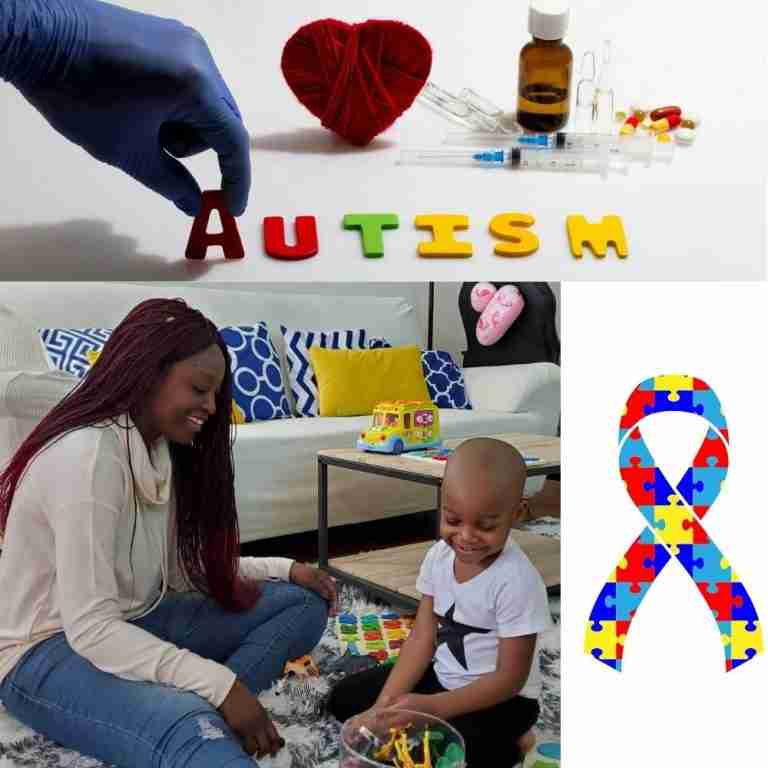The effectiveness of ABA Therapy is something always questioned in the autism community. If you’re a parent of a child on the autism spectrum, you might have heard about ABA Therapy. Whether you have heard good or bad things about ABA Therapy I am going to walk you through the effectiveness of Applied Behavior Analysis (ABA) Therapy based on what we have seen in our autistic son. I will also outline the benefits of ABA Therapy and touch a bit on the controversies surrounding ABA Therapy.
What is ABA Therapy?
ABA stands for Applied Behavior Analysis. It’s a type of therapy used to help children with autism spectrum disorder (ASD) and other developmental disorders. The core idea of ABA is to encourage positive behaviors and reduce behaviors that can be harmful or affect learning. Read more on what ABA Therapy is here.
Benefits of ABA Therapy
Let’s explore the numerous benefits of Applied Behavior Analysis (ABA) Therapy, especially for children with autism spectrum disorder. Understanding these benefits can help you as a parent or caregiver to make informed decisions about your child’s care and development.
Improving Communication Skills
ABA Therapy fosters better Expression and Understanding. It helps enhance both verbal and non-verbal communication. In the four years that our son has been attending ABA Therapy sessions he has improved his verbal and non-verbal communication skills. The therapy sessions helped him to learn how to express his needs and understand others. Through ABA, he learned essential social communication skills like initiating conversation, understanding social cues, and responding appropriately in social situations.
Building Social Skills
ABA Therapy promotes positive social interactions. ABA helped our son learn how to interact positively with others, including peers and adults, which is crucial for his social development. He learned to participate in group settings, an essential skill for school and community involvement. He has learned group participation skills like turn taking in ABA.
Enhancing Learning Abilities
ABA techniques can be applied to academic tasks. Being in ABA Therapy helped our son learn how to read, write and do simple mathematics. ABA also aids in the development of cognitive skills like problem-solving, memory, and attention. It is through these ABA sessions that our son learned to sit down for longer periods and pay attention.
Supporting Family Dynamics
ABA isn’t just about what happens during therapy sessions. It’s about fostering positive behavior in all areas of life. Therapists often work with parents and teachers to apply ABA principles at home and school, making the learning continuous and consistent. You should always know that active family involvement in ABA therapy leads to better outcomes and fosters a more supportive home environment.
Reducing Problematic Behaviors
ABA is effective in decreasing problematic behaviors, such as self-harm, aggression, and repetitive behaviors, by replacing them with more constructive actions. We noticed a significant reduction in meltdowns ever since our son started ABA Therapy. Now we can even go for more than a month without dealing with one. As he learns to self regulate, he also gains more independence in daily activities.
Promoting Generalization of Skills
The skills learned in ABA Therapy can be applied in real world settings. ABA teaches skills in a way that children can apply them across different environments – at home, in school, and in the community. I believe that the skills our son has learned through ABA are not just for the present; they have equipped him with the adaptability he needs for future challenges.
What make ABA Therapy Effective?
Now let’s explore the effectiveness of ABA Therapy. In ABA Therapy there is a tailored approach to individual needs. Tailoring helps ABA Therapy be effective because the customized therapy plans are tailored to the individual need of each child. By focusing on the specific challenges and strengths of a child, ABA therapists can create a more impactful plan. ABA sets clear, measurable goals. This approach has allowed us to track progress of our son’s sessions and making necessary adjustments to the therapy plan.
Evidence-Based Practices
ABA is an evidence-based practice. Numerous studies have shown its effectiveness in improving communication, social skills, and learning in children with autism. This has been true for our family, we have seen great improvements in our son that is why we have continued with the therapies for all these years.
Enhancing Interaction and Understanding
ABA therapy is effective in teaching essential social skills. This includes understanding and using non-verbal cues, sharing, taking turns, and developing friendships. ABA helps improve both verbal and non-verbal communication. This is crucial for children with autism, as communication challenges are common.
Focusing on Positive Behavior
ABA is effective in reducing problematic behaviors. Through techniques like prompting and fading, our son has learned to replace challenging behaviors with positive ones. The effectiveness of ABA Therapy also comes from the generalization of skills. ABA teaches our son skills that he can use in various settings, not just during therapy sessions. This generalization is key to his long-term progress.
Long-Term Benefits of Early Intervention
The effectiveness of ABA increases with early intervention. Starting ABA at a young age can lead to significant improvements in development and learning. The skills learned through ABA therapy can provide lifelong benefits, helping children adapt better to different life situations.
ABA Therapists
As ABA Therapy is a service-based intervention, it’s effectiveness also banks on the roles played by the different therapist in the field. ABA therapists are specially trained professionals. They work closely with each child, tailoring the therapy to their unique needs. These therapists track the child’s progress and adjust the sessions accordingly. They’re like guides on this journey, helping children and parents navigate the challenges of ASD. A Board-Certified Behavior Analyst (BCBA) is a professional with advanced training in ABA. They play a crucial role in designing and overseeing ABA programs, ensuring that the therapy is effective and tailored to each child’s needs.
The Importance of Early Intervention
Early intervention is key in ABA Therapy. Starting therapy at a young age can make a big difference. It helps in shaping positive behaviors and skills from the start, giving children a strong foundation for their future. Our son started ABA Therapy when he was 4 years old. This helped him to prepare for school.
Understanding the Controversies Surrounding ABA Therapy
While ABA has been a lifeline for many families, it’s important to acknowledge and understand the differing perspectives and debates in the autism community.
Early Methods and Changes Over Time
ABA therapy, in its early forms, was much more rigid and less sensitive to individual needs. Over time, methods have evolved, but the legacy of these earlier practices contributes to ongoing debates. Modern ABA has shifted towards more child-centered and respectful techniques. Our son’s ABA Therapy is more play based and centered around his interests.
Concerns Over Rigidity and Compliance
Critics argue that traditional ABA overly emphasizes compliance and conformity, potentially suppressing a child’s natural personality and spontaneity. Finding a balance between necessary learning structures and allowing for individual expression is a key area of discussion.
Ethical Considerations
There’s a growing conversation about ensuring that therapy respects the child’s consent and agency, especially as they grow older. Concerns have been raised about the potential for physical and emotional harm if ABA techniques are not applied with sensitivity and care.
Differing Views on Behavior Modification
Critics argue that ABA might focus on stopping certain behaviors without understanding their purpose or underlying causes, like sensory sensitivities or communication challenges. The neurodiversity movement promotes acceptance of different neurological conditions as natural variations, sometimes clashing with ABA’s focus on behavior modification.
Effectiveness and Long-term Outcomes
There is variability in how children respond to ABA, and some argue that its effectiveness may be overstated or not sufficiently proven in long-term studies. Discussions also focus on how ABA impacts the long-term quality of life and autonomy of individuals with autism.
Perspectives from the Autism Community
Some autistic adults who underwent ABA therapy report negative experiences, which are important to consider in shaping future practices. There is advocacy for therapies that are more inclusive and considerate of the autistic person’s perspective and needs.
ABA Therapy’s role in autism care is multi-dimensional and evolving. As we strive for the best outcomes for children with autism, it’s crucial to listen to all voices, respect diverse experiences, and continually adapt our approaches. ABA Therapy can be a really helpful way to support kids with autism. It’s like having a toolbox – some tools might be super useful, while others might not be needed right now. The most important thing is to listen to your child and work together to find the best way to help them learn and grow.





